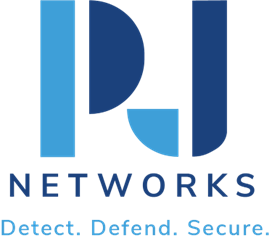Understanding Zero Trust Security Models
Introduction
In the rapidly evolving landscape of cybersecurity, organizations are constantly seeking innovative solutions to protect their digital assets. Traditional security paradigms, which relied heavily on securing the network perimeter, are becoming insufficient in the face of sophisticated cyber threats. Enter the Zero Trust security model, a transformative approach that is redefining how organizations safeguard their information. This blog post delves into the concept of Zero Trust security, its principles, benefits, implementation strategies, and the challenges it presents for organizations aiming to bolster their cybersecurity defenses.
What is Zero Trust Security?
Zero Trust security is a strategic approach to cybersecurity that operates under the premise of never trust, always verify. Unlike traditional models that grant implicit trust to users and devices within a network perimeter, Zero Trust requires continuous authentication and validation of every user and device, irrespective of their location inside or outside the network. By assuming that threats could exist both inside and outside a corporate network, Zero Trust minimizes vulnerabilities and limits the potential impact of any security breach.
The core idea of Zero Trust revolves around strict access control, where no entity is trusted by default. Only authenticated and authorized users and devices can access specific resources within the network. This model is especially relevant as organizations increasingly adopt cloud services, remote work, and IoT devices, thereby expanding the attack surface.
Principles of Zero Trust
Implementing a Zero Trust security model is founded on several key principles:
- Verify Explicitly: Authenticate and authorize every user and device before granting access. This involves adaptive authentication mechanisms that use multiple context-based signals such as user identity, device health, location, and more.
- Use Least Privileged Access: Limit each user’s access rights and permissions to only what is necessary for their role. This minimizes exposure to sensitive information and potential lateral movement within the network if a breach occurs.
- Assume Breach: Operate with the assumption that internal and external threats are omnipresent. This approach encourages organizations to implement strong segmentation and monitor all network traffic for unusual behavior, preparing effectively for potential security incidents.
- Micro-Segmentation: Divide the network into smaller, isolated segments to limit the movement of threats within the network. Each segment requires separate access controls, preventing a compromise in one area from affecting the entire network.
- Continuous Monitoring: Maintain real-time visibility across the network and apply analytics-driven monitoring to detect threats promptly. Leveraging advanced tools and technologies can help in identifying and mitigating risks.
Benefits of Zero Trust Models
Adopting Zero Trust security models offers several key benefits for organizations looking to enhance their cybersecurity posture:
- Enhanced Security Posture: By verifying every access request and continuously monitoring network traffic, Zero Trust significantly reduces the attack surface and minimizes the risk of unauthorized access.
- Improved Compliance: Zero Trust’s granular access controls and continuous monitoring help organizations meet stringent regulatory requirements, ensuring data privacy and security standards are upheld.
- Mitigated Insider Threats: As internal actors are not granted implicit trust, Zero Trust effectively counters potential insider threats through strict validation and least privileged access principles.
- Flexibility and Scalability: Zero Trust models seamlessly integrate with cloud environments and support remote work dynamics, offering scalable security solutions that adapt to organizational growth.
Implementation Strategies
Implementing a Zero Trust security model involves careful planning and strategic execution. Here are some effective strategies:
- Assess Current Security Posture: Conduct a comprehensive audit of existing security measures, network architecture, and user access protocols to identify gaps and vulnerabilities.
- Identity and Access Management (IAM): Implement robust IAM solutions to enforce strict authentication and authorization processes. Multi-factor authentication (MFA) and single sign-on (SSO) technologies are crucial components.
- Network Segmentation: Utilize micro-segmentation techniques to create isolated network segments, each protected by their respective access controls and policies.
- Adopt Security Technologies: Leverage advanced security technologies such as endpoint detection and response (EDR), network detection and response (NDR), and data loss prevention (DLP) tools.
- Continuous Training and Education: Foster a culture of cybersecurity awareness by regularly training employees on security best practices and potential threats.
Challenges and Considerations
Despite its advantages, deploying a Zero Trust security model is not without challenges:
- Complexity and Costs: Implementation can be complex due to the overhaul of existing systems and the integration of new security technologies, leading to increased costs.
- Cultural Shift: A Zero Trust approach necessitates a cultural change within the organization. Employees may resist changes to access protocols and increased scrutiny, underscoring the need for proper change management.
- Integration with Legacy Systems: Organizations with outdated or legacy systems may face difficulties in integrating Zero Trust principles, creating potential teething problems during adoption.
- Ongoing Maintenance: The dynamic nature of security threats requires continuous monitoring, updates, and maintenance, demanding ongoing resource allocation and expertise.
Conclusion
Zero Trust security models represent a paradigm shift in network security strategies by introducing a robust, adaptive approach to access control and threat mitigation. As cyber threats grow in sophistication, adopting a Zero Trust framework can significantly enhance an organization’s cybersecurity defenses, reducing the risk of breaches and minimizing the impact of potential attacks. While implementing Zero Trust may present challenges, the benefits in terms of security, compliance, and adaptability make it an invaluable strategy in today’s digital landscape. Organizations that prioritize the principles of never trust, always verify are better positioned to protect their critical assets and achieve long-term security resilience.
